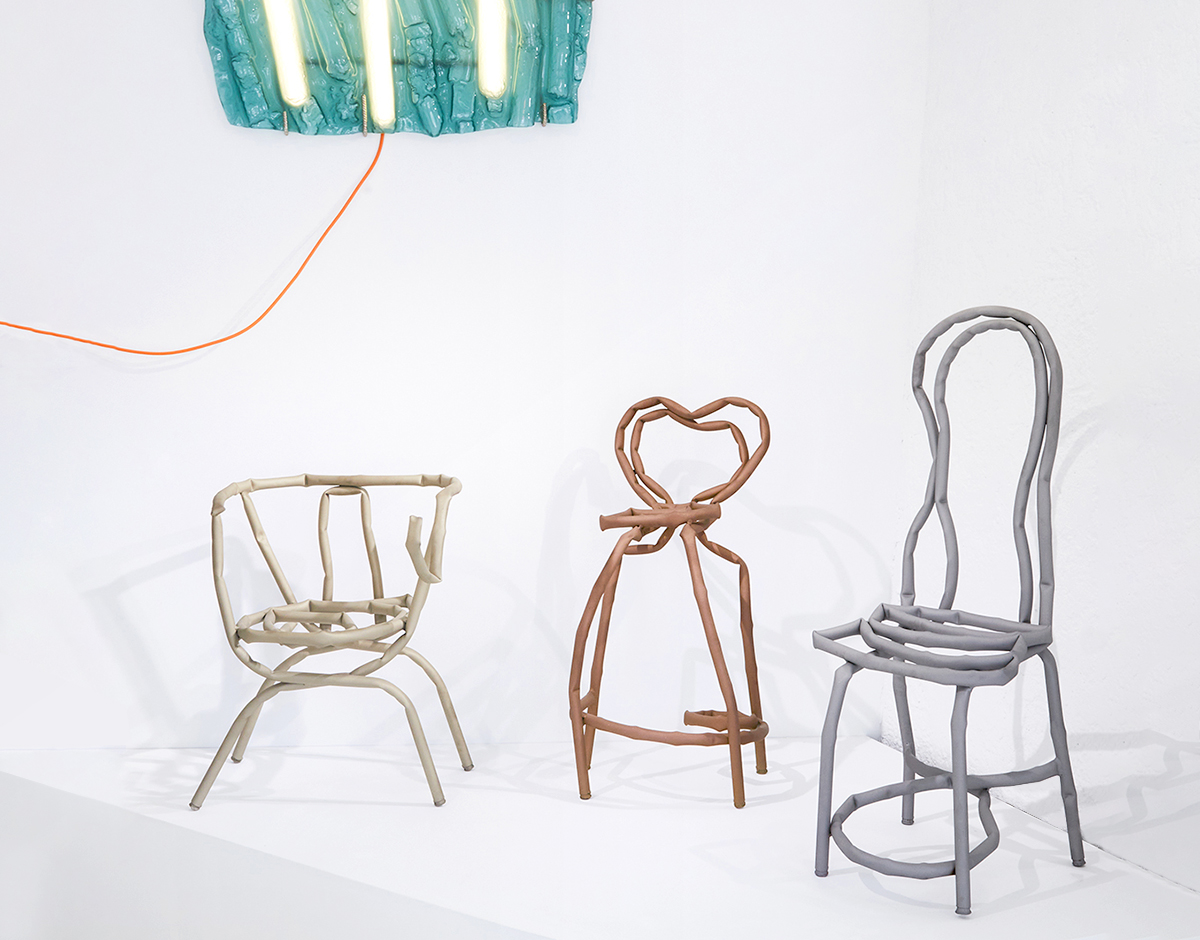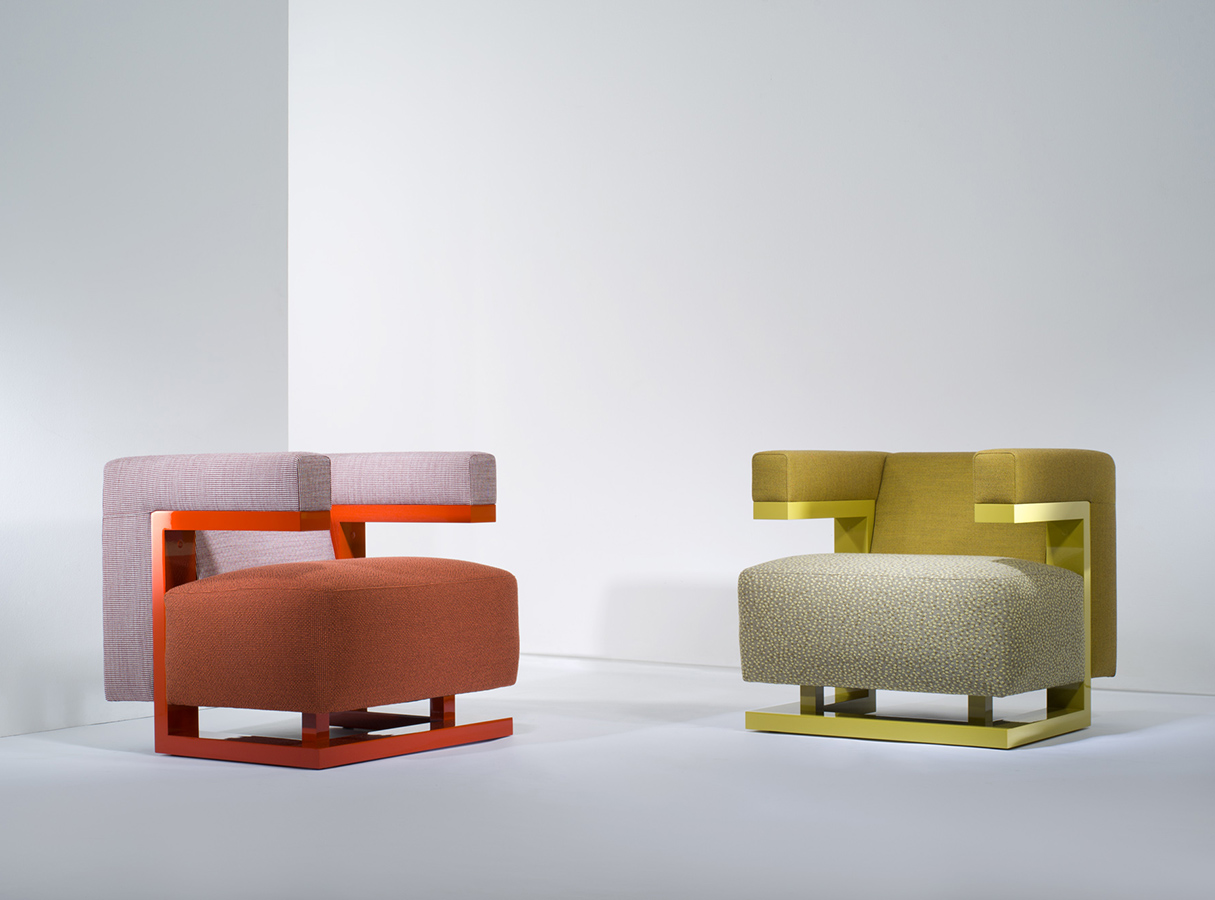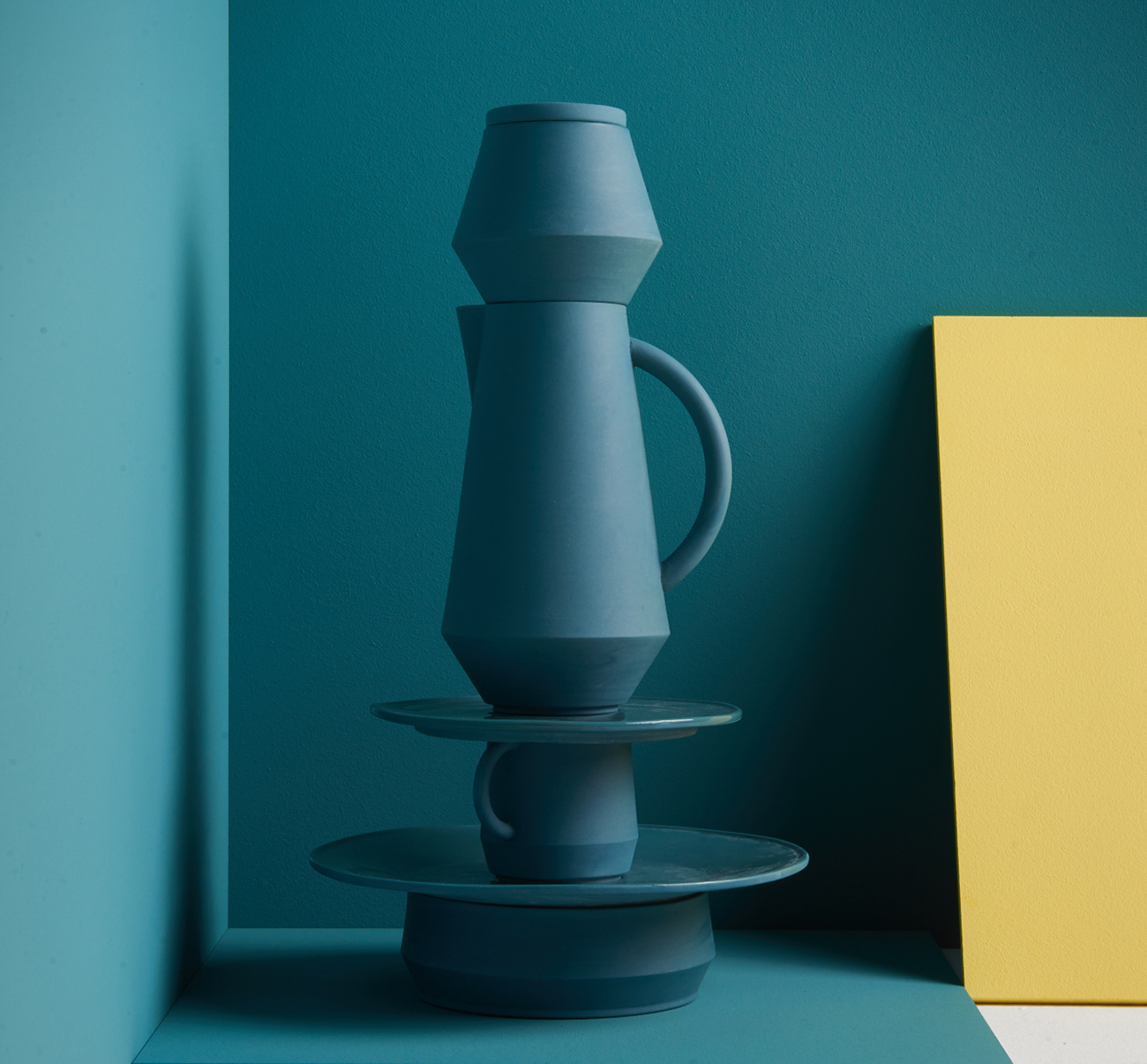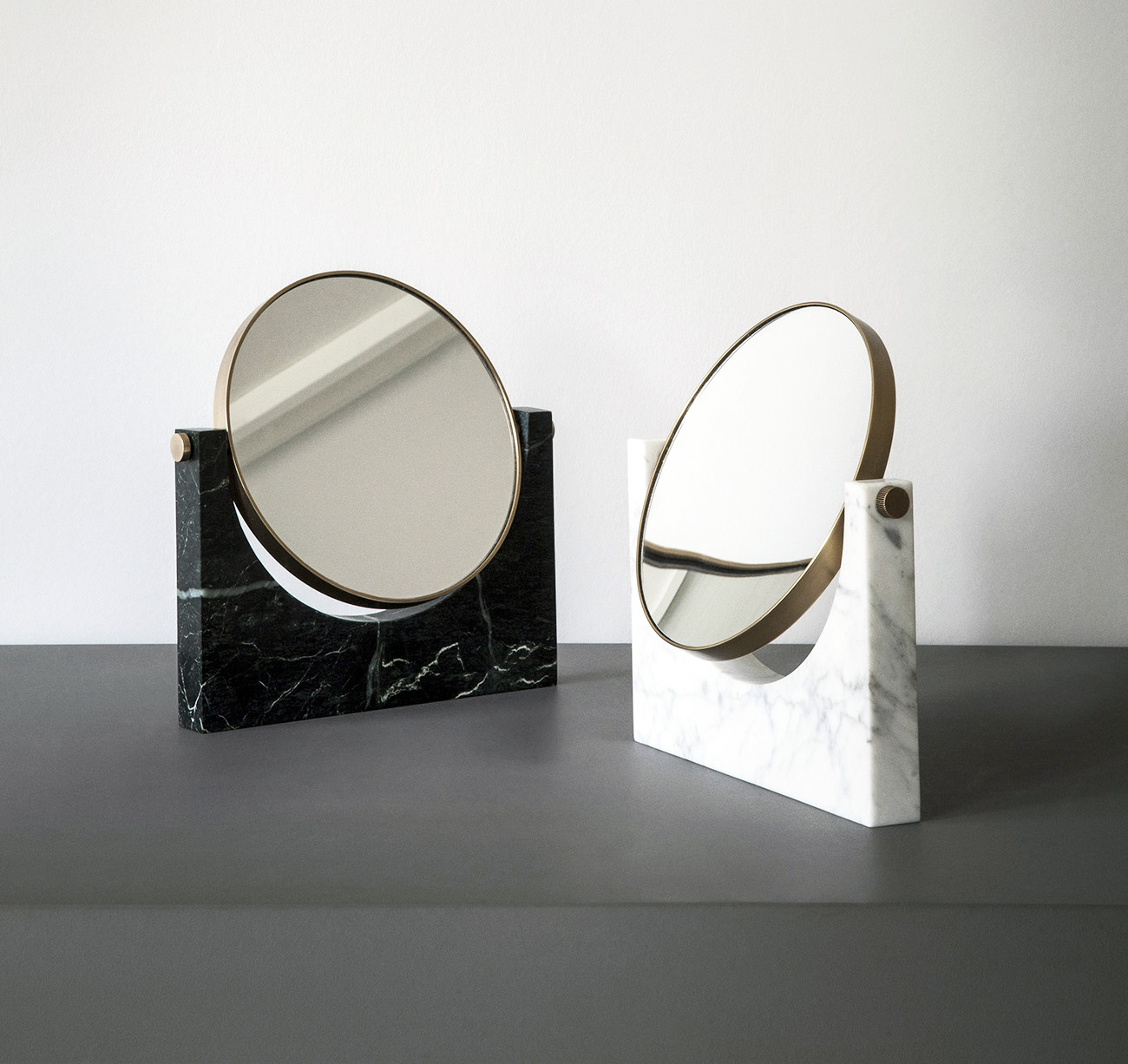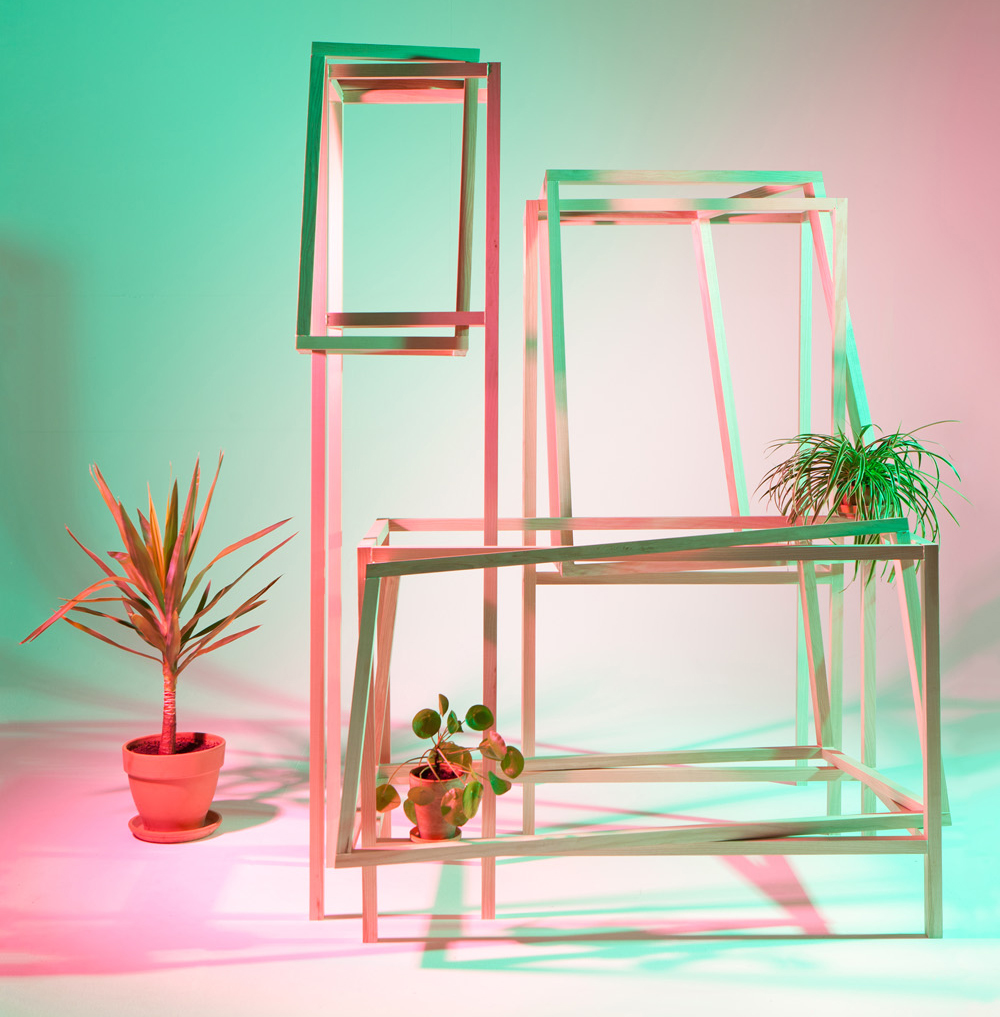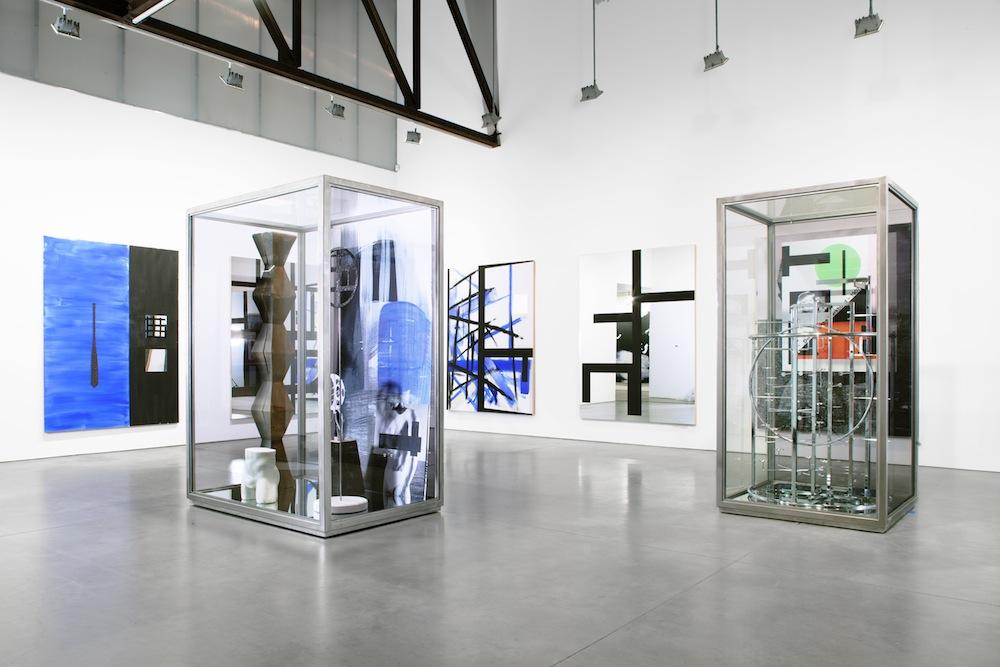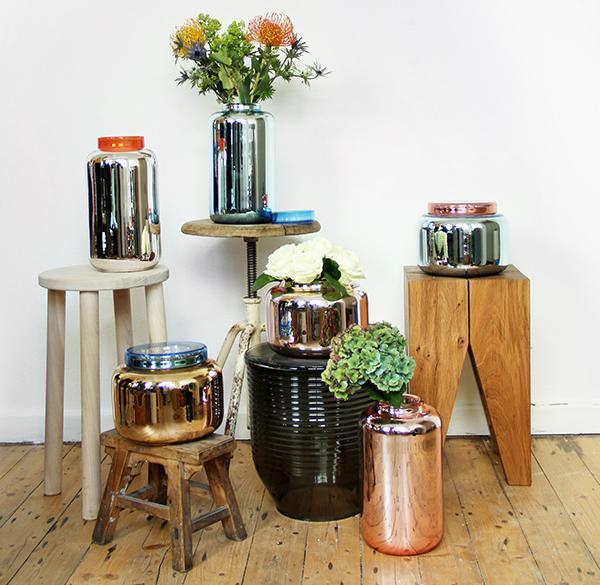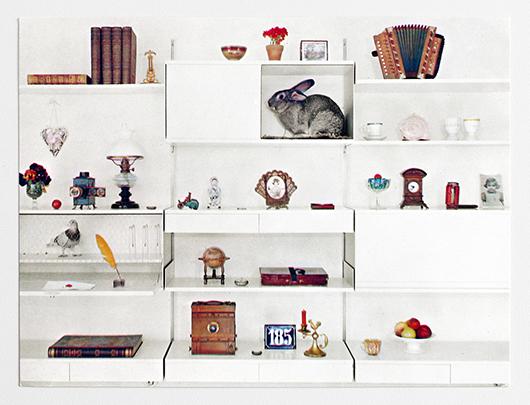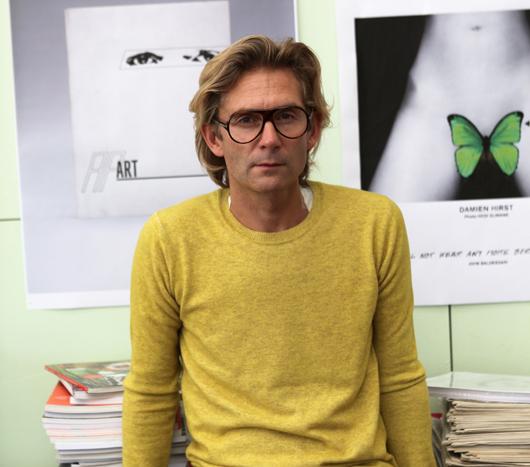History isn't always kind to guys like Mike Meiré — become the poster child for a rebellious and polarizing creative movement like the "New Ugly," which rocked the graphic design world in 2007 with its stretched typography and defiantly awkward layouts, and you're practically begging for an expiration date. To achieve the kind of unqualified success that Meiré has since he started his career in Cologne 25 years ago demands two basic personal attributes: The ability to talk about even your most controversial work in a straightforward, no-bullshit manner, which helps people believe in what you're doing, and the talent to excel at a diverse range of projects just in case they don't. What you learn from reading interviews with Meiré, or in our case, sitting across from him at a dinner party hosted by Apartamento magazine during the Milan Furniture Fair, is that he's driven far less by the desire to make a statement than by an earnest ambition to offer people products that are different from all the other ones already available to them. You also realize that the same guy who made his name art-directing publications like Brand Eins and 032c — and who most recently helped Russian doyenne Dasha Zhukova launch her latest project, the art and fashion magazine Garage — is just as likely to spend his time hanging pheasants inside modern farmhouse installations for Dornbracht, or collecting and exhibiting street food carts from around the world. In other words, even with the hype surrounding 032c having long abated, and that of Garage conspicuously angling to take its place, we still think Meiré's a fundamentally interesting guy, so we asked him to share some of his favorite tools and inspirations below.
